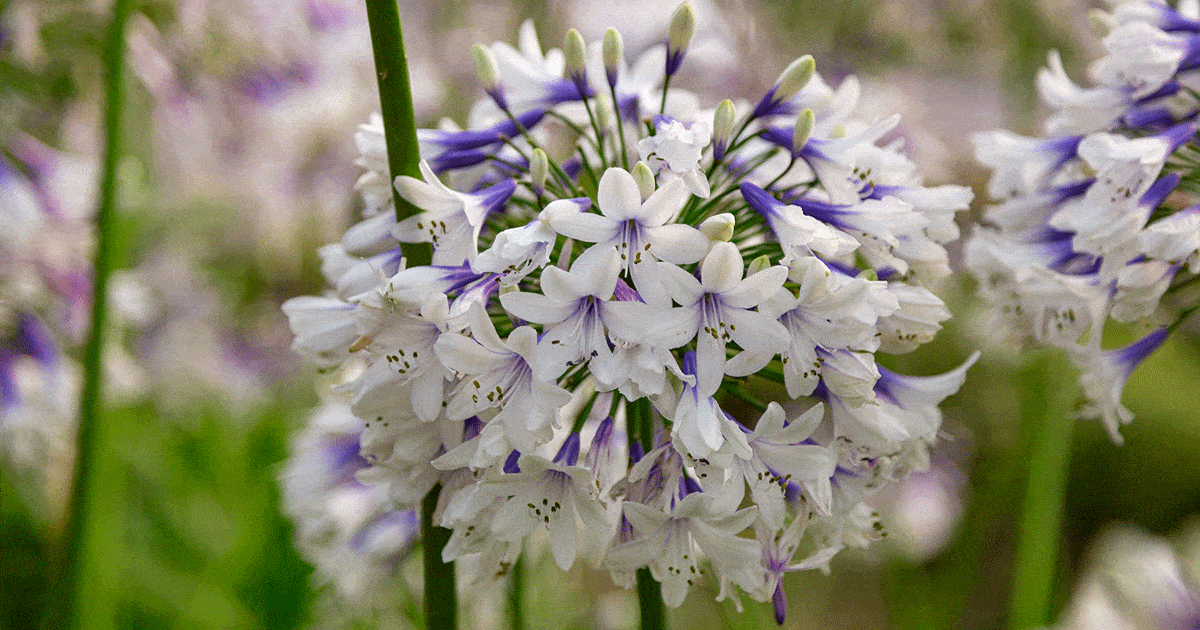Understanding the Art of Agapanthus Care: Vital Steps for Healthy Development and Vibrant Blooms
In the realm of horticulture, the growing of agapanthus stands as a satisfying venture for those that look for to support these stylish blooming plants. From selecting the right variety to understanding trimming techniques, the journey in the direction of growing flourishing agapanthus plants is complex and holds the essential to unlocking the complete capacity of these organic treasures.

Selecting the Right Agapanthus Range

When selecting the appropriate Agapanthus range for your garden, take into consideration aspects such as climate viability, bloom shade, and development practice. In addition, take into consideration the climate in your area to guarantee the Agapanthus variety you select can prosper in your specific problems. Recognizing the development behavior of different Agapanthus ranges is important for proper positioning within your yard.
Suitable Planting Conditions
Considering the ideal ecological needs is crucial for successful Agapanthus growing. Agapanthus plants are delicate to cold temperatures and need to be protected from frost during winter months.
To make sure healthy growth and vivid flowers, plant Agapanthus bulbs at a deepness of concerning 2-4 inches and area them 8-12 inches apart. Mulching around the base of the plants helps keep wetness and suppresses weed growth.
Watering and Feeding Tips
Preserving appropriate wetness degrees and giving crucial nutrients are vital components in the care program for Agapanthus plants. When it comes to sprinkling Agapanthus, it is essential to strike a balance. These plants prefer regularly damp soil however are prone to root rot if overwatered.
Feeding Agapanthus is vital for promoting healthy growth and respected flowers. Use a balanced plant food, such as a 10-10-10 formula, in the early spring as brand-new growth emerges. Repeat this application every 6-8 weeks throughout the growing season. Prevent excessive fertilization, as it can bring about lush vegetation at the expense of flowers. Always comply with the supplier's instructions for proper dilution and application methods. By complying with these watering and fertilizing pointers, you can ensure your Agapanthus plants grow and generate vibrant, durable blossoms.
Pruning Methods for Agapanthus
Trimming Agapanthus plants at the suitable times and with proper strategies is crucial for preserving their health and wellness and click over here now advertising optimal growth and blooming. The ideal time to trim Agapanthus is in late wintertime or very early springtime before brand-new growth emerges.
For flowered stems, wait until the blooms have actually withered and then cut them back to the base. This not just cleans up the plant's look but likewise urges the advancement of brand-new flower buds. Deadheading invested blossoms can likewise reroute the plant's energy into creating more blooms rather than setting seeds. Nonetheless, if you wish to collect seeds for propagation, leave some flowers to dry and fully grown on the plant.
Remember to utilize tidy, sharp tools to make exact cuts and decrease the threat of introducing conditions. Agapanthus. Regular pruning will certainly aid maintain your Agapanthus looking neat and healthy and balanced while making certain an abundant screen of beautiful blossoms
Taking Care Of Common Insects and Diseases
After making sure correct trimming strategies for Agapanthus, it is essential to address common pests and conditions that can influence the wellness and vigor of these plants. One typical insect that impacts Agapanthus is the Agapanthus gall midge.
Another common concern is fungal fallen leave place, which presents as check my reference dark sores on the fallen leaves. To avoid fungal illness, ensure good air blood circulation around the plants, stay clear of above watering, and remove any contaminated fallen leaves quickly. Additionally, Agapanthus plants can endure from origin rot if they are planted in poorly draining pipes soil. To avoid this, plant Agapanthus in well-draining dirt and stay clear of overwatering. By being cautious and taking prompt activity against insects and diseases, you can help your Agapanthus plants grow and create dynamic flowers.

Conclusion
Finally, understanding the art of agapanthus care involves selecting the best range, supplying ideal growing problems, appropriate watering and feeding, ideal trimming techniques, and dealing with usual parasites and illness. By complying with these essential actions, you can make certain healthy and balanced growth and dynamic blooms for your agapanthus plants. Remember to routinely keep an eye on and keep your plants to advertise their general well-being and longevity.
To make certain healthy and balanced growth and vibrant blooms, his explanation plant Agapanthus light bulbs at a depth of about 2-4 inches and room them 8-12 inches apart. By adhering to these watering and fertilizing tips, you can guarantee your Agapanthus plants prosper and produce vibrant, durable flowers.
One common parasite that impacts Agapanthus is the Agapanthus gall midge. In addition, Agapanthus plants can experience from root rot if they are planted in inadequately draining dirt. By complying with these essential actions, you can make sure healthy development and dynamic flowers for your agapanthus plants.